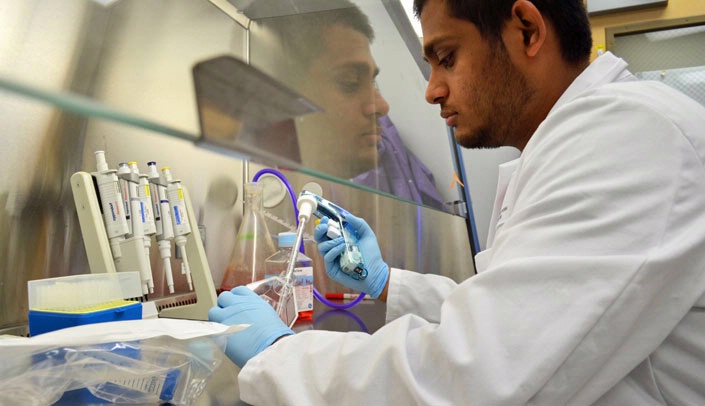The 1.4 million predominantly young adults in the United States affected by inflammatory bowel disease (IBD) need help. The disease, chronic inflammation of the gastrointestinal (GI) tract, is painful, debilitating and comes with an increased risk of colon cancer.
 |
David Oupicky, Ph.D. |
Antibody-based treatments for IBD have to be given by injection and can be associated with severe side effects like Cushing’s syndrome, diabetes and osteoporosis.
Thank goodness for the drug delivery capabilities of particles. Thank goodness the UNMC College of Pharmacy is on the case.
David Oupicky, Ph.D., professor of pharmaceutical sciences and co-director of the Center for Drug Delivery and Nanomedicine (CDDN), leads an effort on the development of a novel combination therapeutic strategy for an oral treatment of IBD based on particles recently developed in his lab.
Thanks in part to the problems presented by antibody-based treatments, the oral route is considered ideal for IBD treatment due to high patient compliance and direct access to the disease site. But high enzymatic and nuclease activity, extreme pH conditions, and the physical mucus-epithelial barrier — all the acids and digestive enzymes in the stomach — can make oral treatments tough.
IBD can change the GI environment, affecting the efficacy of traditional drug delivery methods.
Again, thank goodness for nanoparticles.
“Particle formulations can extend the time the encapsulated drugs spend in the system,” Dr. Oupicky said. “The use of mucoadhesive polymers, like chitosan, can further enhance time the drug stays in the GI tract to provide sustained release of active agents in the mucosa layer.”
Because of their ability to target sites of intestinal inflammation, nanoparticles and microparticles offer multiple additional advantages for delivery of drugs in IBD.
Through chemistry, treatment can be selectively delivered to inflamed intestinal tissue either by “passive” or “active” targeting.
“Passive targeting takes advantage of the size-selective accumulation of particles in the gastrointestinal inflammation sites,” Dr. Oupicky said. Active targeting to selected sites and cells in the GI tract can be achieved by conjugation of specific ligands to the surface of the particles.
They are not there yet. But, Dr. Oupicky, the CDDN, and the College of Pharmacy, are working to help millions of people who suffer from this debilitating disease.
